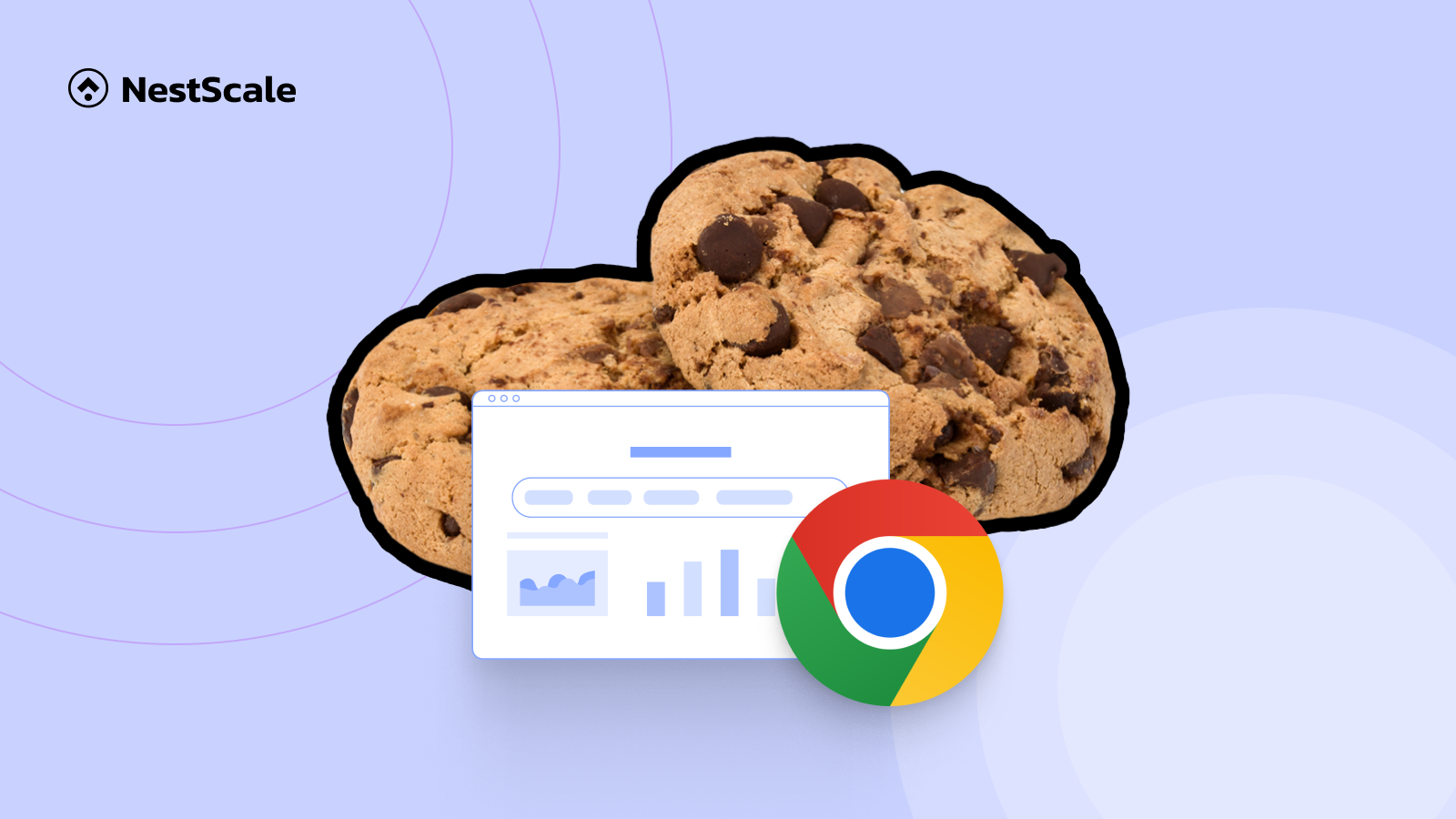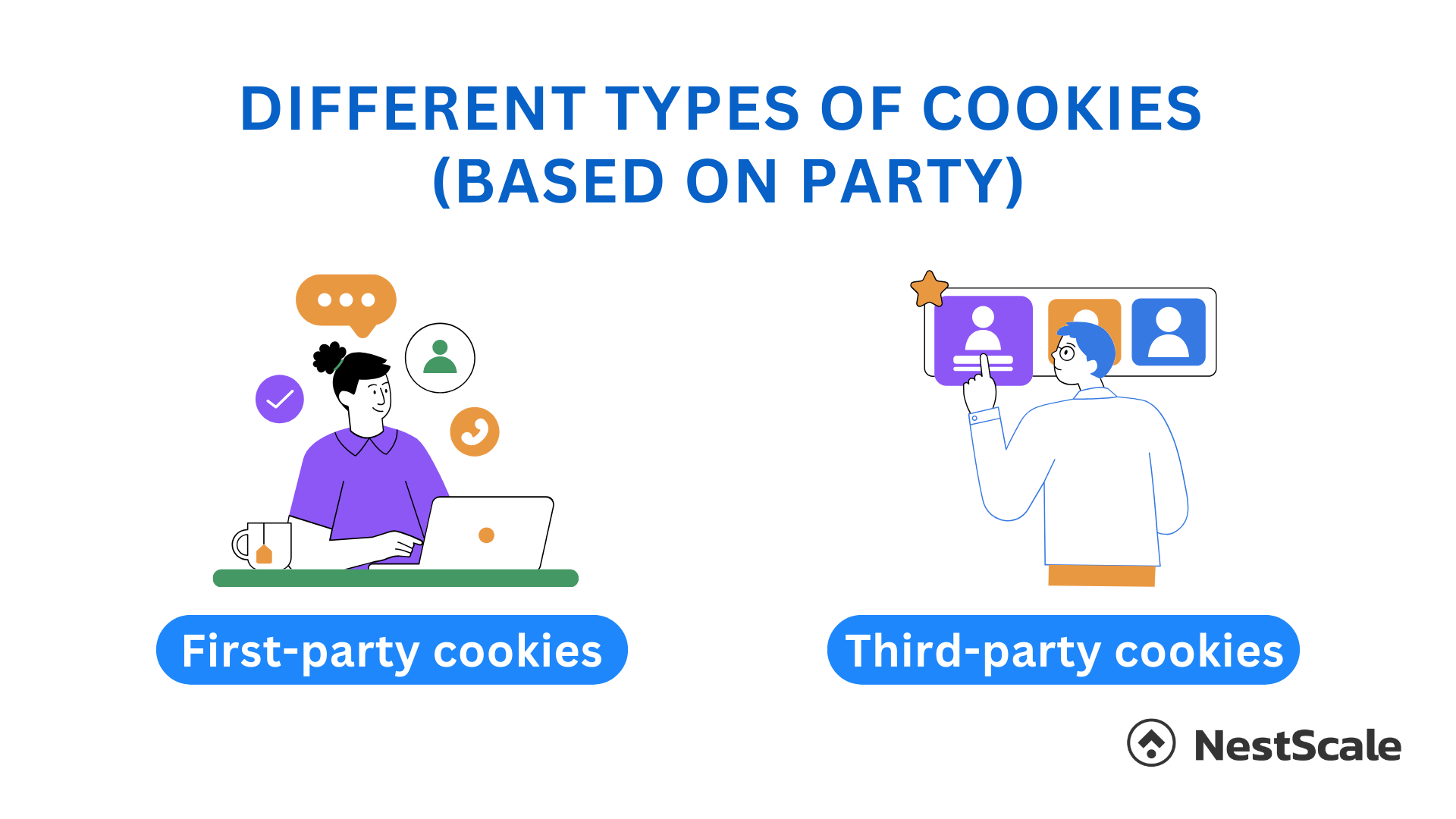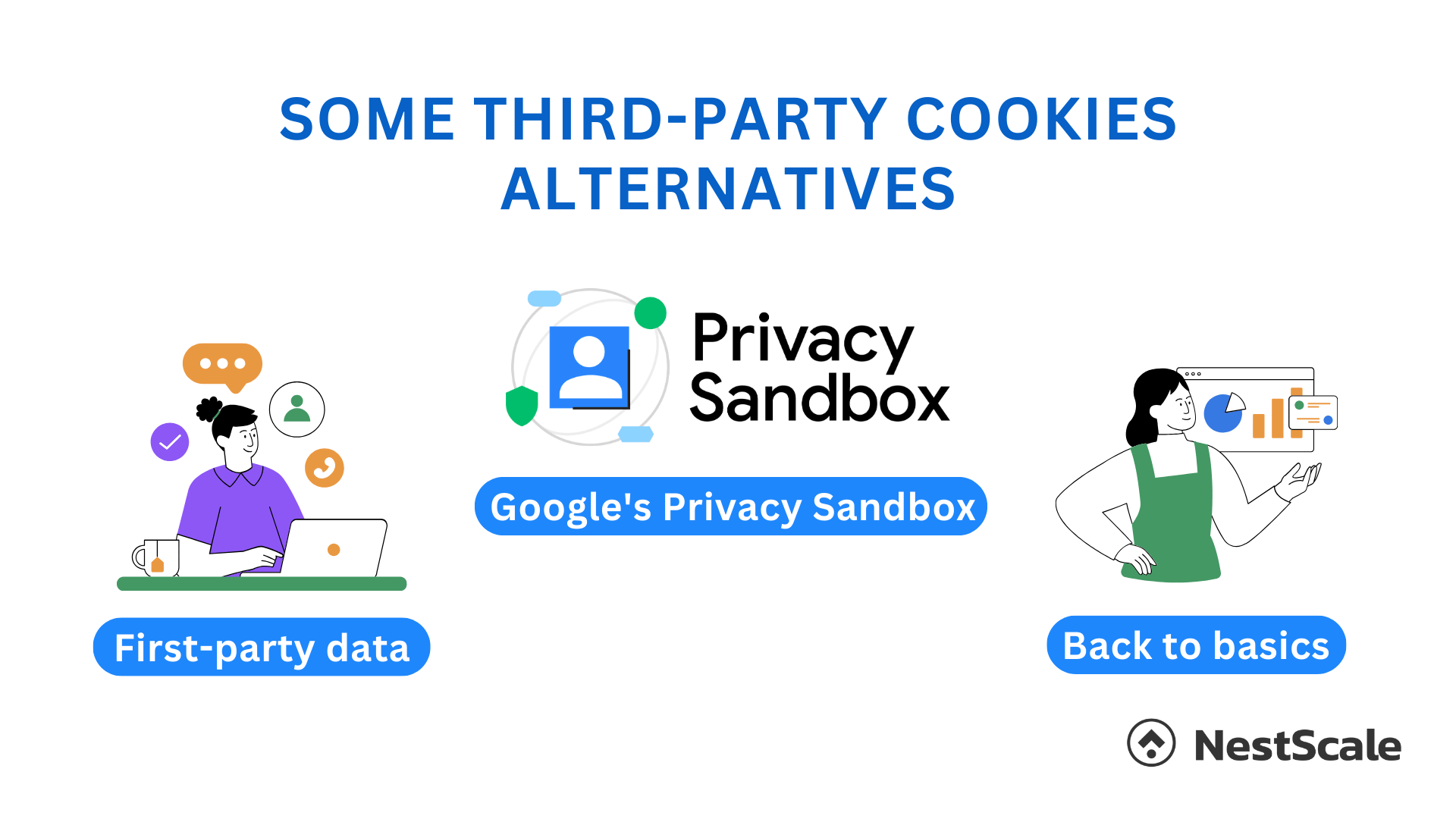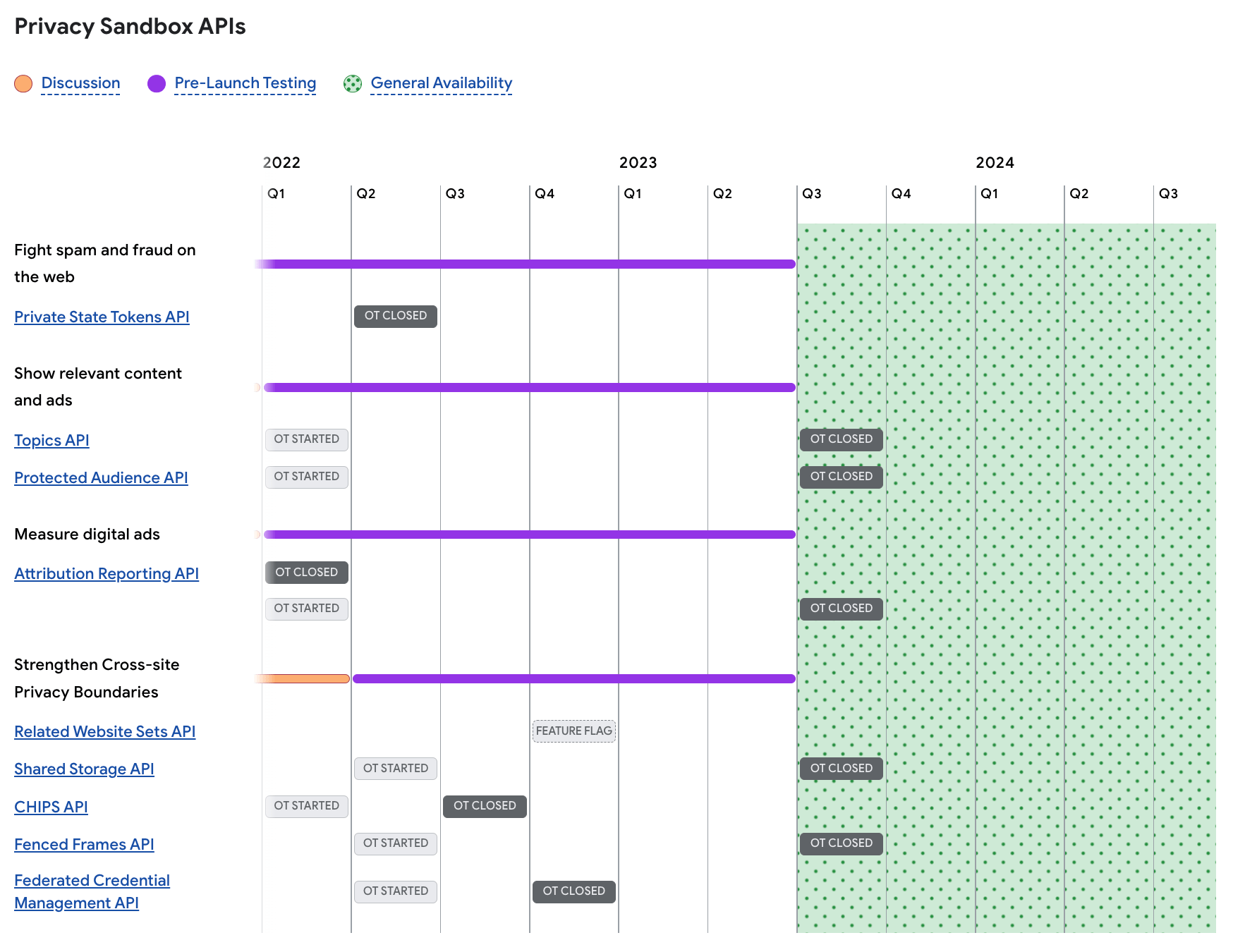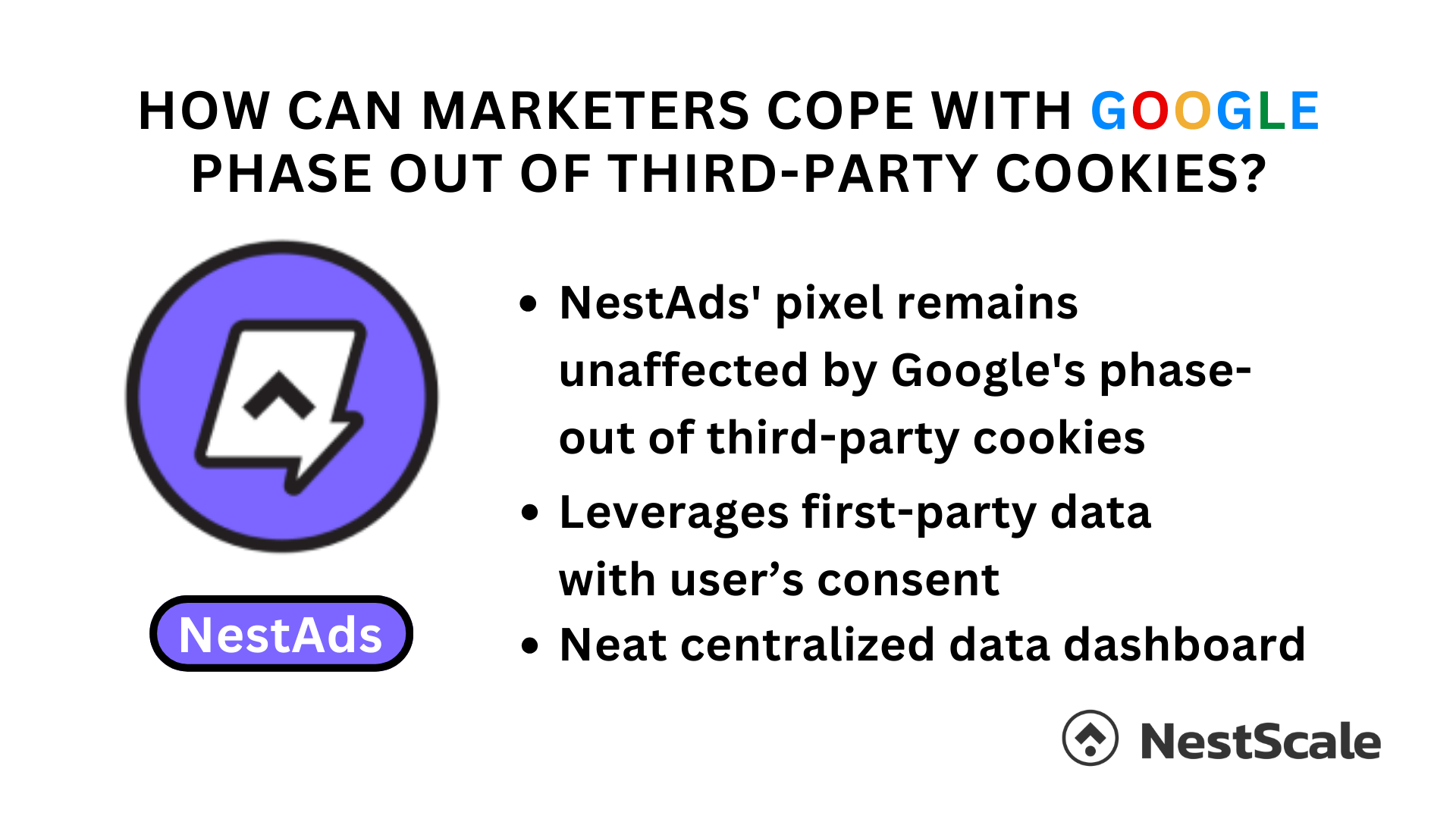These days, whenever we visit a website, we’re often greeted with a cookie usage prompt that asks whether we want to allow full, partial, or deny the use of cookies. These online cookies (not real cookies) typically store information about users, such as their personal details or on-site behavior. However, this familiar sight may soon become a thing of the past as Google is swiftly implementing its plan to phase out third-party cookies. Ever since it was first mentioned in 2020, Google’s move to eliminate third-party cookies has been a hot topic. Now, with the first quarter of 2024 fast approaching, significant changes are on the horizon. In this blog post, we’ll guide you through everything you need to know about Google’s phase-out of third-party cookies, the phase-out plan, and how businesses can navigate this substantial shift. Let’s get started!
What are cookies & the different types of cookies?
Before we get into the details of Google’s third-party cookies phase-out, let’s go over some of the basics. What are cookies? How many types of cookies are there? And how do they work?
Cookies are essentially small pieces of data that websites store on your computer or mobile device. These files contain information about your browsing behavior, helping websites remember your preferences, login status, and other vital data.
There are several ways to group different types of cookies, such as by purpose or party. However, in the context of this blog post, we’ll be dissecting cookies based on the party type. So, when separated by party, there are generally two main types of cookies:
- First-party cookies: are set by and stored on the domain (website) you are currently visiting. These cookies will collect data about your on-site behaviors and website settings, all of which are used for internal purposes, such as improving user experience. It’s also worth mentioning that first-party cookies can only track users’ activities on their original site, and not on other websites.
- Third-party cookies: are set by a different company and stored on a different domain from the one you’re visiting. Third-party cookies are for tracking between websites and displaying relevant ads throughout the process. In essence, third-party data are used to collect data across multiple websites for advertising and analytics purposes.
What do we need to know about Google third-party cookies phase-out?
Google’s move to phase out third-party cookies marks a major milestone in the online advertising industry. After years of teasing and experimenting, this transition is now becoming a tangible reality. It’s not only a significant development for advertisers but also for general users. With such a major event underway, it’s important to grasp what’s happening. To do that, let’s start by exploring some key aspects to fully understand the extent of this change.
What is Google’s third-party cookies phase-out?
Starting in early 2020, Google announced its intention to phase out third-party cookies. However, due to significant resistance and opposition from various industries and stakeholders, in June 2021, Google decided to delay the third-party cookie deprecation by two years. As of now, Google is moving forward with its plan to eliminate third-party cookies usage. The plan is to disable third-party cookies for 1% of stable Chrome users and move them to Google Privacy Sandbox by the first quarter of 2024. Afterward, Google plans on doing away entirely with third-party cookies by the third quarter of 2024.
The reasons behind Google’s third-party cookies phase-out decision
Data collection and on-site behavior tracking have always been a topic of much debate. Some argue that these practices are unethical, and many organizations are abusing users’ data. On the other hand, some might argue that these tracking are necessary for an optimal on-site experience and ad targeting. Regardless of which side of the debate you take, you can’t deny that there needs to be a clear set of standards and more transparency when it comes to data collection and usage.
This is even more apparent when you consider the Google Privacy Sandbox initiative. This collection of Google’s cookies alternatives was created to reduce cross-site tracking and emphasize data privacy, while still keeping online services accessible and secure to all. So, the need for increased data usage transparency, combined with tightened data collection regulations such as the General Data Protection Regulation (GDPR) or the California Privacy Rights Act (CPRA) are most likely the main drivers behind Google’s decision to phase out third-party cookies.
Timeline of Google third-party cookie phase-out
Now that we know what the Google third-party cookies phase-out entails, it’s time to go over the timeline of this major change.
- January 2020: Google first announced the phase-out support for third-party cookies in the browser.
- June 2021: Google announced a two-year delay for the third-party cookie phase-out to the second half of 2023.
- July 2022: Google delayed the phase-out plan to the second half of 2024.
- Q4 2023: Provides Chrome-facilitated testing modes that allow sites to preview how site behavior and functionality works without third-party cookies.
- Q1 2024: Disables third-party cookies for 1% of users to facilitate testing.
- Q3 2024: Google starts deprecating third-party data for all Chrome users.
As we can tell, Google has been working on this phase-out plan for quite some time. And now they’re committed to sticking to their timeline. Starting in the last quarter of 2023, Google will provide brands with Chrome-facilitated testing modes, allowing websites to preview how site behaviors and various functionalities operate without third-party cookies. Then, by early 2024, Google will disable third-party cookies for 1% of stable Google users, transitioning them to the Privacy Sandbox. Finally, in the third quarter of 2024, the deprecation of third-party data will be available for all Chrome users, marking the beginning of a cookie-less reality.
Alternatives to third-party cookies
As D-Day is coming closer, the world of digital marketing is undergoing a significant transformation. It’s essential to understand that this change doesn’t spell the end of tracking. Several alternatives have emerged to replace third-party cookies, making it possible to continue tracking user behavior while respecting data privacy regulations like GDPR. Some of the most promising solutions include Google’s Privacy Sandbox APIs and the use of first-party data.
First-party data
As mentioned earlier, first-party data originates from and by the website, you’re currently visiting. These cookies offer insights into your on-site activities and site preferences, all of which are used for internal purposes. In addition, Google has also emphasized the growing importance of first-party data within the Privacy Sandbox initiative. Embracing first-party cookies can empower marketers to enhance user experiences and craft more precise marketing strategies.
Nevertheless, it’s essential to acknowledge that in order to accumulate a robust collection of high-quality first-party data, businesses must first establish a strong relationship with their users. It’s also worth noting that larger enterprises may enjoy an advantage in leveraging first-party data due to their broader customer base.
Google’s Privacy Sandbox initiative
As an alternative to third-party cookies, Google introduced its Privacy Sandbox initiative back in 2019. Google’s Privacy Sandbox aims to establish and implement new web standards related to data collection and privacy. With Privacy Sandbox, all individual user data stays within the Chrome browser. This represents a distinct departure from the current operation of third-party cookies, where the cookie typically embeds on the user’s device. This initiative will gradually phase out third-party cookies (3PC) and replace them with a suite of purpose-built application programming interfaces (APIs). Some of these APIs include:
- Federated Credential Management (FedCM): facilitates federated identity services, enabling users to log in to websites and platforms. FedCM allows users to log into sites without having to share their personal information with the identity service or the site.
- Private State Tokens: prevents fraud and spam by only exchanging limited, non-identifying information across sites.
- Topics: allows for interest-based advertising and content personalization.
- Protected Audience: allows for remarketing and custom audiences.
- Attribution Reporting: allows for measurement of ad performance and conversions.
Here’s a timeline of Privacy Sandbox’s API testing period and launch periods. In general, most of these APIs have been available since the third quarter of 2023.
Back to basics
In response to the impending phase-out of third-party cookies, some marketers are revisiting more traditional digital marketing approaches. Some of these strategies include search engine optimization (SEO), content marketing, and email marketing. With a thorough understanding of the user intent and a well-researched search terms list, businesses can use SEO to deliver highly personalized ads. Meanwhile, content marketing is also effective for attracting and engaging the right audience, especially during the early stages of the conversion funnel. Another approach is to offer exclusive content as an incentive for users to sign up. Providing additional value such as a free download can serve as a valuable source of zero-party data for businesses to enrich their customer data profiles.
How can marketers cope with Google’s phase-out of third-party cookies?
The forthcoming Google phase-out of third-party cookies presents both a challenge and an opportunity for marketers. To navigate this transition successfully and continue achieving their marketing objectives, businesses need to come up with new and effective strategies.
This is an ideal moment for companies to reevaluate their advertising budgets. It’s time we identify which channels are driving sales and which ones are not. Once these insights are gathered, it’s crucial to reallocate resources to those high-performing channels accordingly. Another strategic approach for businesses is to prioritize first-party data. As we mentioned, first-party data would play a crucial role in the Privacy Sandbox initiative. Its reliability and privacy compliance make it a valuable asset. By leveraging first-party data, businesses can establish direct relationships with their customers and create personalized experiences that resonate effectively.
With that said, managing a substantial volume of first-party data can be a complex task, especially for smaller businesses with limited resources. However, there’s no need to worry, as NestAds is here to support you through this significant transition. With NestAds’ centralized dashboard, businesses can sync performance data from multiple advertising channels into one user-friendly interface, simplifying the data analysis process. What’s even better is that NestAds’ pixel remains unaffected by Google’s phase-out of third-party cookies. It operates using first-party data with the consent of valid users, allowing NestAds’ UTMs to get around privacy restrictions, including the recent iOS 17 Link Tracking Protection.
As the D-Day for the deprecation of third-party cookies approaches, time is of the essence. Are you ready to elevate your online marketing strategies? Let NestAds be your partner on this exciting journey as you embrace the future of digital advertising!




































